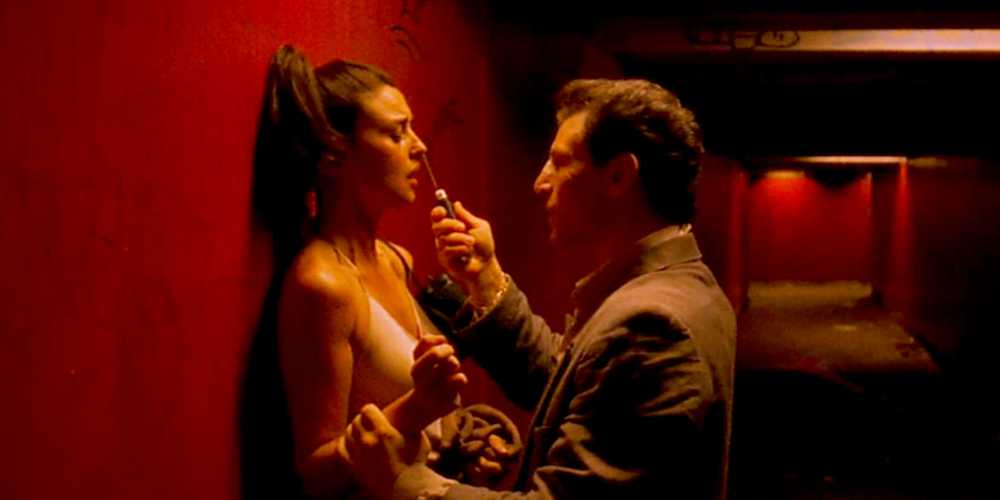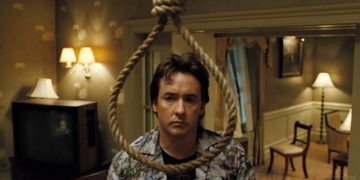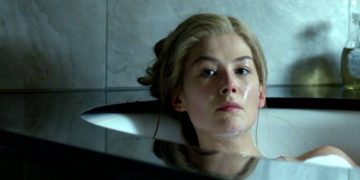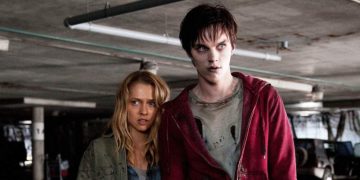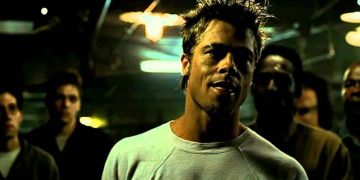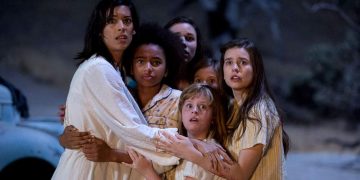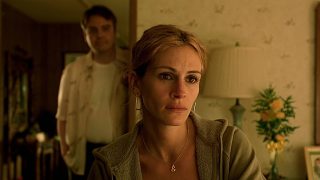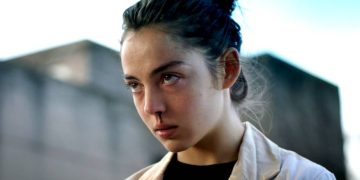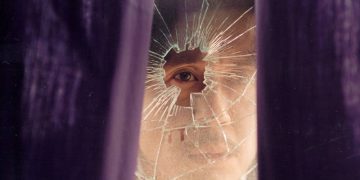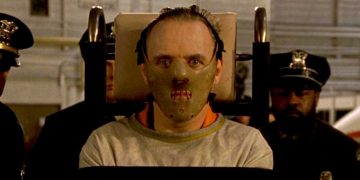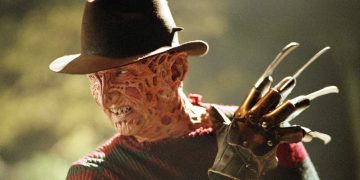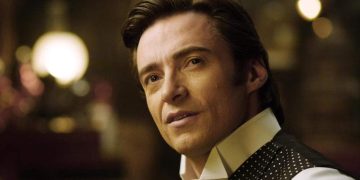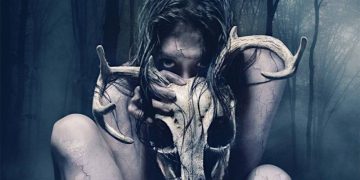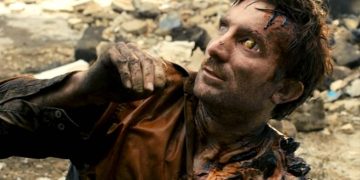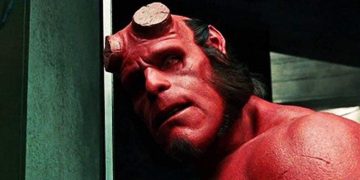In this day and age, with streaming services and online pirating so prevalent, we've have forgotten the illicit thrill of procuring the VHS tape of a banned movie—one that was usually a horror film.
We're more open about extreme movies now, but back in the day, it wasn't uncommon for movies to be deemed "too violent," "too disturbing," or "too sick" for the general public.
Banned horror movies are interesting as reflections of their time periods, allowing us glimpses into what was "too much" for their eras—and they often leave us confused as to why they were banned at all because they aren't as shocking to our modern sensibilities.
Whether they live up to their past reputations or not, here are some of the scariest horror movies that were banned for being too terrifying, too grotesque, or simply too wicked.
15. Hostel: Part II (2007)
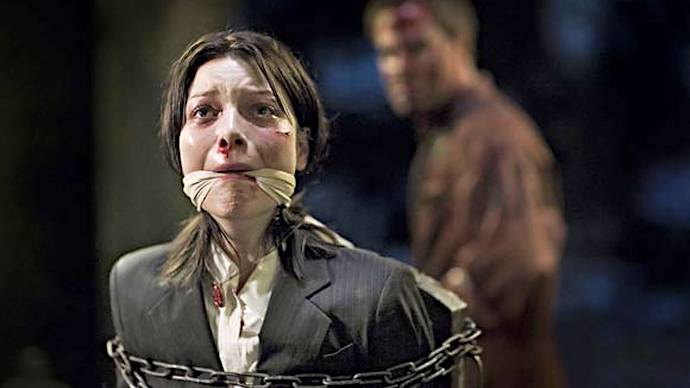
Directed by Eli Roth
Starring Lauren German, Heather Matarazzo, Bijou Phillips
Horror (1h 34m)
Eli Roth is known for making films that get a lot of attention, but perhaps not the good kind of attention.
With his first film in the Hostel series, Eli wrote and directed himself into the mainstream horror viewer's consciousness. In fact, the film was so successful that he was given full endorsement over the sequel—but people weren't so happy with the follow-up.
Instead of three men being held captive in an Eastern European village, this time it's three women. As you might expect, wealthy men arrive and pay good money to torture and kill them all. Hostel: Part II has plenty of sadism and Roth misses none of the gore.
Unsurprisingly, some countries weren't impressed and forbade the film's release. Most notably, Germany banned the film (and its extended cut) and New Zealand refused to release even the edited version.
14. Mikey (1992)
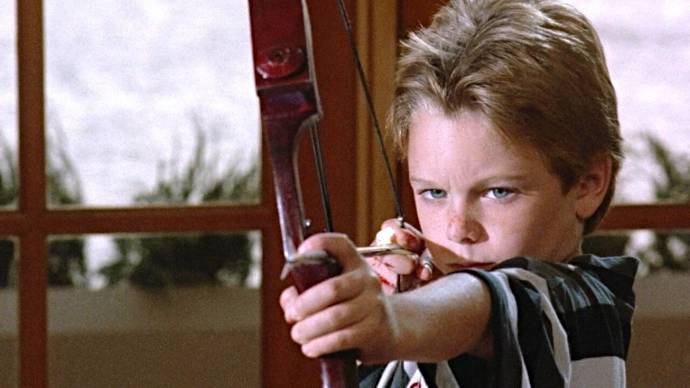
Directed by Dennis Dimster
Starring Brian Bonsall, Josie Bissett, Ashley Laurence
Horror, Thriller (1h 32m)
Mikey follows the story of the eponymous orphan Mikey, who goes from adoptive family to adoptive family. Unfortunately for him, whenever he's adopted by a family, his new parents tend to have fatal accidents shortly after. Or do they?
It soon transpires that Mikey is actually a murderous, bat-wielding boy psychopath. He kills his adoptive parents and makes it all look like an accident, right before he's shipped off to another foster home so that the cycle can continue.
However, the British Film Board didn't feel too good about releasing this film, resulting in a ban. Why? Because child psychologists felt as though it could lead children (who might accidentally see the film) to develop a troubled understanding of real-life violence and death.
Not even a year later in 1993, two-year-old James Bulger was abducted, tortured, and murdered by a pair of 10-year-olds. This led many to reconsider how much impact media can really have on our behavior, especially the behaviors of impressionable children.
13. Land of the Dead (2005)
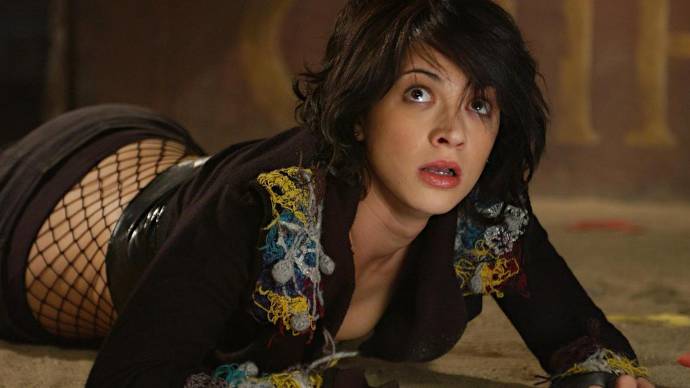
Directed by George A. Romero
Starring John Leguizamo, Asia Argento, Simon Baker
Horror, Sci-Fi, Thriller (1h 33m)
Land of the Dead was just another addition to George A. Romero's catalog of great zombie horror movies.
The plot follows a human society that's struggling to survive in the midst of a zombie apocalypse. There are scenes involving murder, violence, and, of course, zombies dining on human brains.
However, for some cultures, Land of the Dead felt too close to a real story to be enjoyed. In Ukraine, Land of the Dead was banned by the Culture Ministry, who decided that various plot points were insensitive to the country's history.
Maksym Rostotsky, who headed the TV Viewers' Association of Ukrainian Parents at the time, said that the Holodomor was still such a recent tragedy that it would be negligent of the committee to let the film be seen by a wider audience.
Scenes of cannibalism—which feature frequently in Romero's film—could be seen as a distasteful reminder of a nation's troubled recent history. The film was banned and has remained banned since.
12. Slender Man (2018)
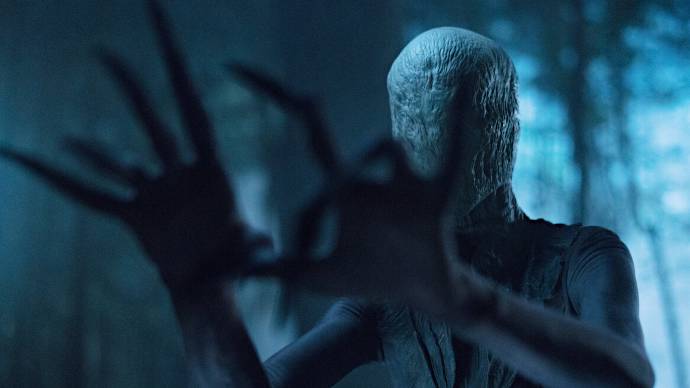
Directed by Sylvain White
Starring Joey King, Julia Goldani Telles, Jaz Sinclair
Horror, Mystery, Thriller (1h 33m)
Everyone knows the story of the Slender Man. He's a shadowy figure with a slim build and an almost skeletal appearance, who can be seen stalking the woods from where he abducts people.
The "creepypasta" legend suggests that his blank, featureless, white face is the last thing people will ever see. The legend was so provocative—and evoked such a tremendous cult following—that it inspired a movie based on the character: Slender Man.
But the state of Wisconsin banned Slender Man outright. Why? Because of a horrific incident from back in 2014.
The Slender Man stabbing incident involved two 12-year-old Wisconsin girls—Anissa Weier and Morgan Geyser—who lured a friend into the woods where they then stabbed her 19 times. (She survived.)
According to Geyser, she'd felt that Slender Man had been following her for months and she wanted to appease him. Given how closely this subject hits to home, Wisconsin's film ban is unsurprising.
11. The Exorcist (1973)
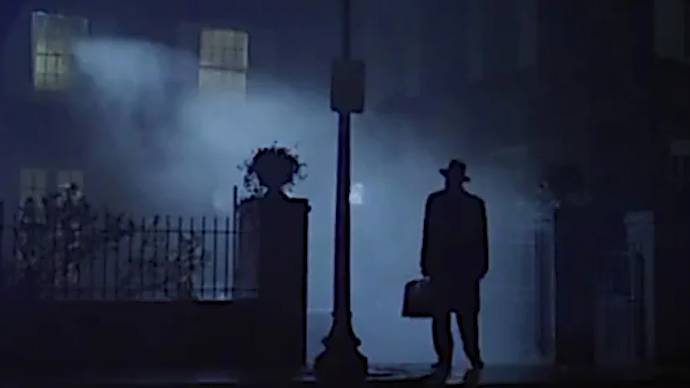
Directed by William Friedkin
Starring Ellen Burstyn, Max von Sydow, Linda Blair
Horror (2h 2m)
While it's now frequently placed in most "Best Horror Movies" lists, William Friedkin's adaptation of William Blatty's 1970 novel of demonic possession invoked not just fear and terror, but visceral bodily reactions in theater viewers when it was released.
Upon release in 1973, The Exorcist was condemned by the Catholic Church and reviled by critics. Its depiction of Satan manifest in the body of an innocent 12-year-old girl (played to shivering effect by a young Linda Blair) hit audiences on a frighteningly deep level.
Something about seeing a pure young girl spouting out lines like "Your mother sucks cocks in hell!" and having her head twist around 360 degrees and mutilating herself with a crucifix... It was enough to cause vomiting, fainting, and even hysteria in audiences.
The Exorcist was given an X certificate in 1974 (forbidding public showings to anyone under 18), then finally re-released with the director's uncut version in 1999.
10. I Spit on Your Grave (1978)
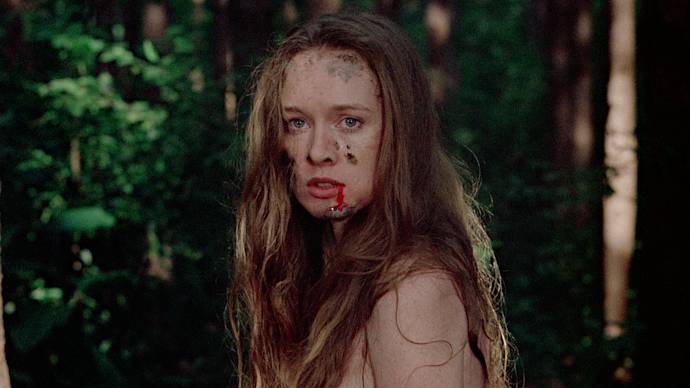
Directed by Meir Zarchi
Starring Camille Keaton, Eron Tabor, Richard Pace
Horror, Thriller (1h 41m)
Originally released in 1978 as Day of the Woman, Meir Zarchi's I Spit on Your Grave has since become reconsidered as a feminist cult classic, inspiring films such as 2017's Revenge and 2020's Promising Young Woman.
It was banned due to its controversial topic: the rape and subsequent revenge of its heroine. In particular, the 30-minute scene of gang-rape against the protagonist sparked moral outrage.
It received an X rating around the world, and explicitly banned in Norway, Iceland, West Germany, and Ireland for "glorifying violence against women." Roger Ebert called it a "vile bag of garbage."
Inspiring the "video nasty" genre of movies that were banned by film commissioning bodies in the UK, I Spit on Your Grave paved the way for movies that seemingly exploited women's bodies while forcing us to confront the dark and real traumas that women endure.
9. Cannibal Holocaust (1980)
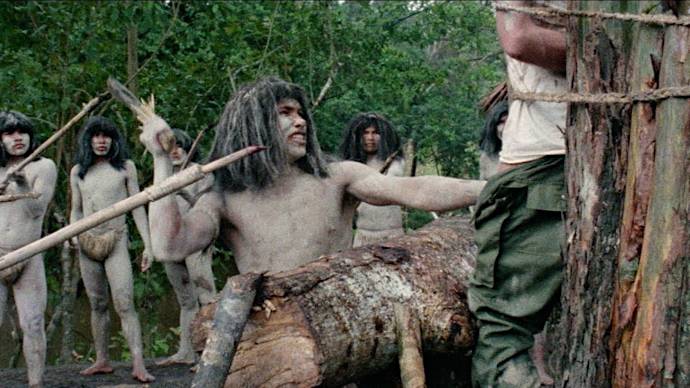
Directed by Ruggero Deodato
Starring Robert Kerman, Francesca Ciardi, Perry Pirkanen
Adventure, Horror (1h 35m)
Cannibal Holocaust follows an American rescue team from New York University who try to locate a film crew who have gone missing in the Amazon Rainforest while filming a documentary.
The mixture of exotic subject matter and the cinéma vérité documentary style ensured that audiences came away thinking they had just witnessed real-life events on the screen.
Ten days after its 1980 premiere in Milan, Cannibal Holocaust was banned under the orders of a local magistrate and charged with "obscenity," with the courts having jurors determine if certain scenes—such as a woman being impaled—were real or not.
Cannibal Holocaust was eventually released in the UK in 2001 after nearly six minutes were cut. It would go on to inspire a slew of copycat horror movies that presented violence as real.
8. Thriller: A Cruel Picture (1973)
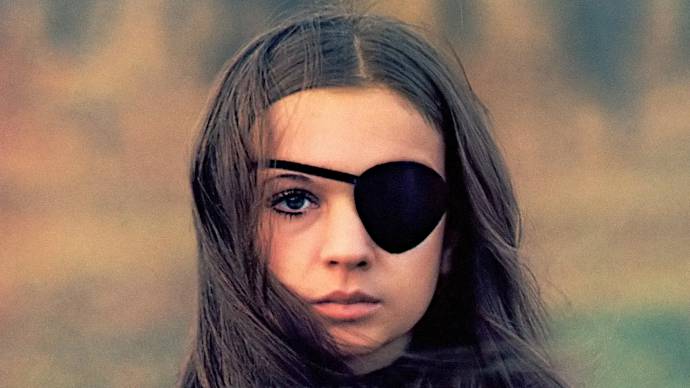
Directed by Bo Arne Vibenius
Starring Christina Lindberg, Heinz Hopf, Despina Tomazani
Action, Crime, Drama (1h 44m)
Described as the "roughest revenge movie ever made," Axel Fridolinski's 1973 film Thriller: A Cruel Picture was more obscure than I Spit on Your Grave but just as influential on cinema history. Quentin Tarantino even based Kill Bill on it.
The film tells the story of a "dumb sex slave" who's repeatedly raped, then gets revenge on her rapists with a sawn-off shotgun. It was marketed as the only film to be banned in its home country of Sweden.
So effective was this movie, Christine Lindberg became an icon in her black eyepatch and long black coat and handy black shotgun.
7. The Texas Chain Saw Massacre (1974)
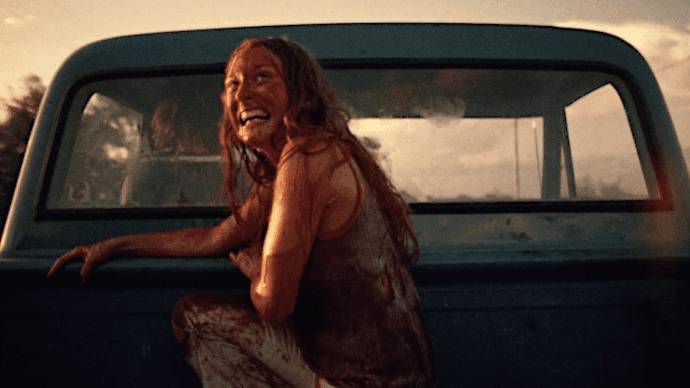
Directed by Tobe Hooper
Starring Marilyn Burns, Edwin Neal, Allen Danziger
Horror (1h 23m)
Alongside The Exorcist, Tobe Hooper's 1974 low-budget horror movie The Texas Chain Saw Massacre pioneered the modern horror genre. It's a melding of sun and dirt, with terror always bubbling beneath the heat.
Its cheap aesthetic and low-budget production—completed with only $140,000 in 100-degree heat during August in Texas—added to the atmosphere of dread and gave it the feeling of a documentary.
However, despite being banned in several countries, the film went on to achieve legendary status with its villain, Leatherface, taking on iconic recognition in the cultural consciousness.
6. Henry: Portrait of a Serial Killer (1986)
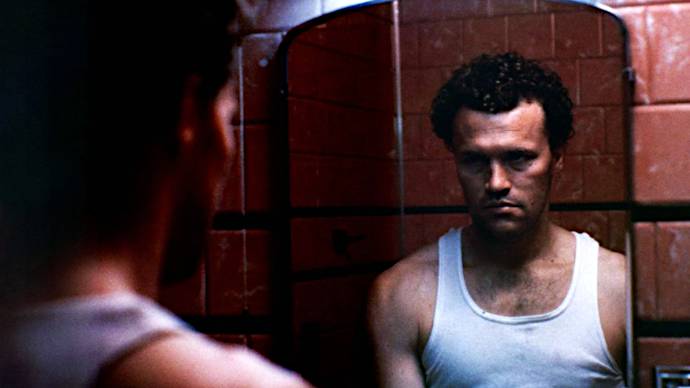
Directed by John McNaughton
Starring Michael Rooker, Tracy Arnold, Tom Towles
Biography, Crime, Drama (1h 23m)
Just like Cannibal Holocaust and The Texas Chain Saw Massacre, 1986's Henry: Portrait of a Serial Killer was interpreted by some as an actual documentary film of a real-life killer, which can be attributed to its low-budget aesthetic and realistic atmosphere.
After its initial film festival run in 1986, Henry: Portrait of a Serial Killer was given an X rating in the US, which only added to its controversial reputation. In 1991, the uncut version was further banned by the board of film censors in Australia.
5. The Last House on the Left (1972)
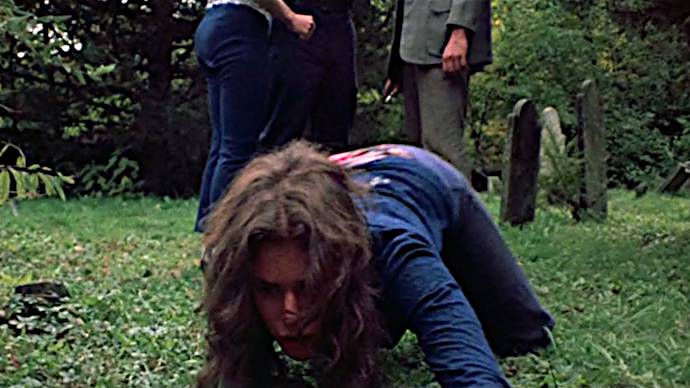
Directed by Wes Craven
Starring Sandra Peabody, Lucy Grantham, David Hess
Crime, Horror, Thriller (1h 24m)
Wes Craven's 1972 film The Last House on the Left had the unusual origin of being based on a classic Swedish arthouse film: Ingmar Bergman's 1958 film The Virgin Spring. (Both films are connected by their "horror of the rural.")
Craven updated it with the grit, grime, and moral panic of American horror movies in the 70s—and the resulting film is a nasty revenge film that still shocks today.
Two teenage girls on their way to a rock concert are kidnapped by a gang of murderous thugs, then tortured and raped in the woods. The parents are left to enact revenge.
Just like I Spit on Your Grave, it was a box office success but banned in the UK, where it wasn't released until 2008. The US continued showing it with an R rating, with one cinema in Massachusetts stating that "the film relates to a problem that practically every teenage girl and parent can identify with."
4. Irreversible (2002)
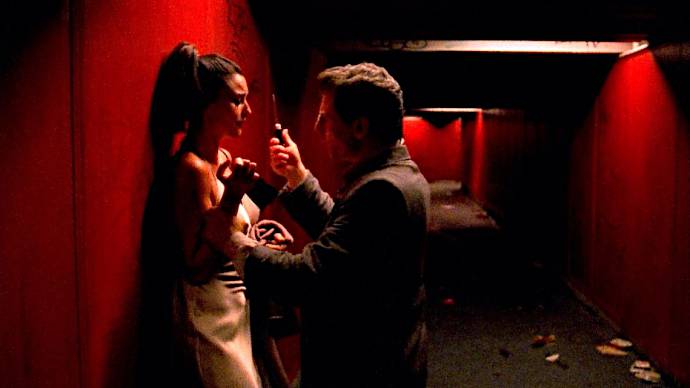
Directed by Gaspar Noé
Starring Monica Bellucci, Vincent Cassel, Albert Dupontel
Crime, Drama, Mystery (1h 37m)
Gaspar Noé has long been known as the "enfant terrible" of French cinema. Provocative and shocking, 2002's Irreversible was a part of the New French Extremism movement occurring at the time.
Unconventionally, he decided to tell the story backwards—from end to beginning. This gave the film added shock value by opening with the brutal act of final revenge and ending with Monica Belucci's horrific rape (which lasts a painful 32 minutes on screen).
Irreversible made the audience reconsider their thirst for violence and revenge, showing just how empty it all is. Despite not being marketed as a genre horror movie, it successfully depicted the real-life horrors of rape, violence, and revenge. Irreversible was banned in Australia.
3. Faces of Death (1978)
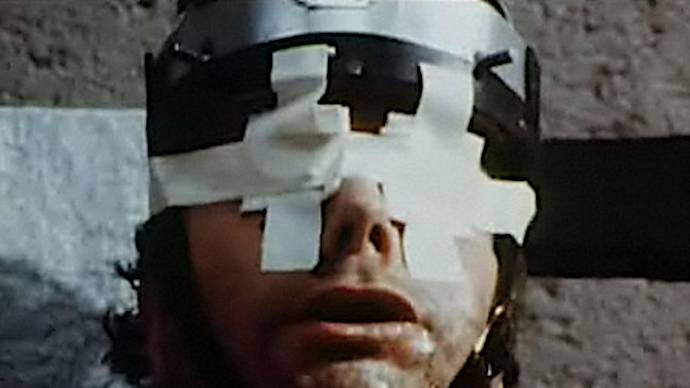
Directed by John Alan Schwartz
Starring Michael Carr, Samuel Berkowitz, Mary Ellen Brighton
Documentary, Horror (1h 45m)
Hailed as the most gruesome film of all time, 1978's Faces of Death earns its reputation for mashing up fictional horror and real-life deaths. Faces of Death shows scenes of re-enacted deaths as well as real deaths—the reason why it was banned in 46 countries.
It was seen as a "shockumentary" that ran the gamut of horrifying images: open autopsies, plane crashes, occult orgies full of human blood, slaughtered animals on meathooks, real electrocutions.
Faces of Death also acts as a symbol of all our collective fears and anxieties around the most inevitable thing of all: death. In addition to being banned in dozens of countries, Roger Ebert called it the "most popular nasty of them all."
2. A Serbian Film (2010)
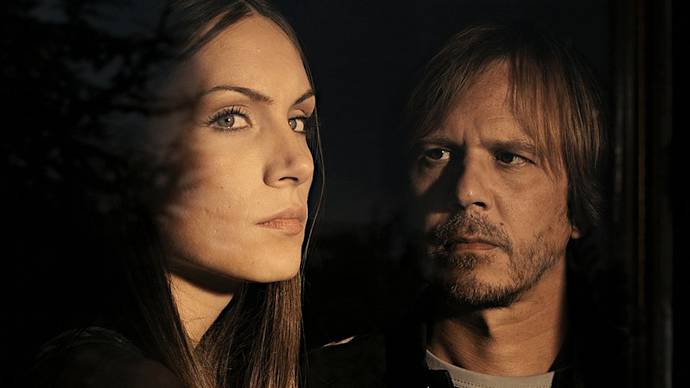
Directed by Srdjan Spasojevic
Starring Srdjan "Zika" Todorovic, Sergej Trifunovic, Jelena Gavrilovic
Horror, Mystery, Thriller (1h 44m)
A Serbian Film isn't just an exploitation film—it's one of the most disturbing films you could ever see. (We don't recommend it.)
The plot follows Miloš, a porn star who has his foot halfway out the door. He's unsure if he should continue with his career, but he's determined to provide financially for his family.
In order to do so, he agrees to do one last film to secure his family's future. But what follows is absolutely unspeakable: sadism, pedophilia, necrophilia, violence, murder, and suicide.
A Serbian Film was met with heavy backlash, with Spain, Australia, Malaysia, New Zealand, Norway, and the Philippines all banning the film without hesitation. The UK demanded cuts be made for it to be released, while the US gave it an NC-17 rating. It's one of the few films that's so deeply upsetting, a ban feels rightfully proper.
1. The Evil Dead (1981)
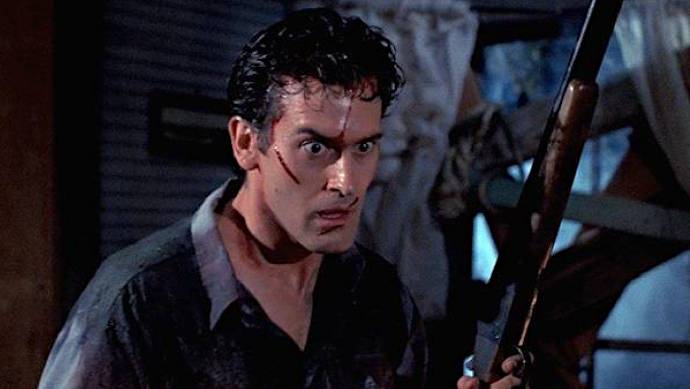
Directed by Sam Raimi
Starring Bruce Campbell, Ellen Sandweiss, Richard DeManincor
Horror (1h 25m)
While the franchise would evolve away from disturbing horror to comedic horror, the 1981 film that launched the Evil Dead universe is nothing like its sequels.
The Evil Dead may seem theatrical and fun now—especially the possession scenes—but given that Sam Raimi made it as a student on a measly $90,000 budget, it's remarkably creepy.
The Evil Dead, both the original and its remake, was banned in several countries (including Finland, Singapore, and Ukraine) for graphic violence, blood, sex, and gore.
When it was later released on VHS in 1983, moral crusader Mary Whitehouse in the UK bemoaned it as the "number one video nasty," which is strange to think about considering its modern status.
